Utlizing ‘AI’ Artificial Intelligence Software in the Hospitality Industry
Have you ever wanted more time and more help in your...
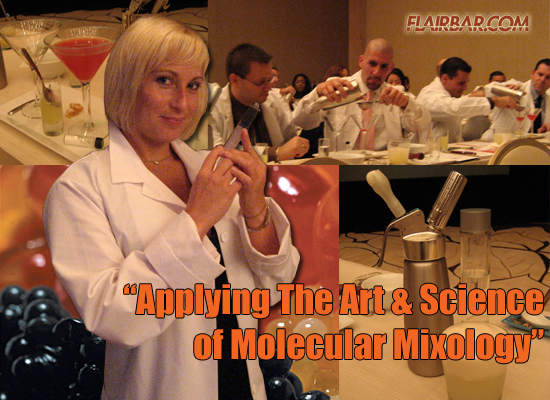
I have been using Molecular Mixology successfully behind my bar for over a year now. When I first heard about it I thought it was something from some science fiction movie and had no practical means behind a true working high volume bar. Boy was I mistaken…
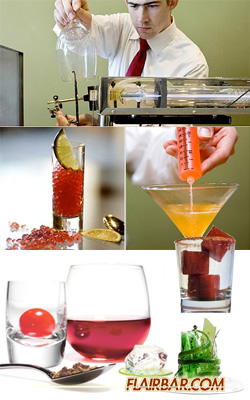 First off before we know how to use this knowledge we have to ask ourselves “What is Molecular Mixology?”… I was first introduced to Molecular Mixology by Jamie Boudreau from Robert Hess’s Drinkboy site. He had some very informative videos, each focusing one a different drink and a different form of Molecular Mixology. This immediately caught my attention and imagination and I wanted to learn more. To do this I went to one of the industries experts… Belvedere’s Brand Ambassador & Master Mixologist Claire Smith.
First off before we know how to use this knowledge we have to ask ourselves “What is Molecular Mixology?”… I was first introduced to Molecular Mixology by Jamie Boudreau from Robert Hess’s Drinkboy site. He had some very informative videos, each focusing one a different drink and a different form of Molecular Mixology. This immediately caught my attention and imagination and I wanted to learn more. To do this I went to one of the industries experts… Belvedere’s Brand Ambassador & Master Mixologist Claire Smith.
We had the pleasure of attending one of Claire Smith’s Molecular Mixology seminars and had an exclusive one on one interview for Flairbar.com afterwards which we are pleased to share with you our loyal readers today. Claire describes Molecular Mixology as “looking at the physical properties of ingredients and the reactions that occur when they are combined to create foams, gels, mists and cocktails that blur the boundary between food and drink”. She also states that “Molecular Mixology is an extension of connoisseurship, which sees people seeking out the ultimate taste experience using the finest ingredients and drawing on technology to create it in a glass”.
Claire further breaks it down and explores some categories of Molecular Mixology with Foams, Caviers & Pearls, Mists and Deconstruction which we will go into further detail with now.
Molecular Mixology stems from Molecular Gastronomy a culinary trend that is a scientific discipline involving the study of physical and chemical processes that occur in cooking which has been popular for the last ten to fifteen years adding different textures and dimensions to our food and drink.
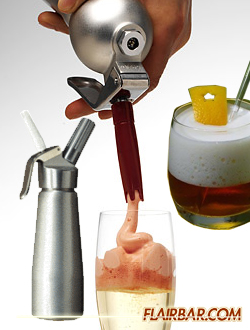 Foam is probably the very basic and starting block of Molecular Mixology. Foams have been created in the past for centuries by Mixologists using egg whites to help create foams for their cocktails to give an added texture to their creations. Now we have the option of adding another protein element using gelatin, Nitrous Oxide and an espuma or crème whipper to accomplish this task.
Foam is probably the very basic and starting block of Molecular Mixology. Foams have been created in the past for centuries by Mixologists using egg whites to help create foams for their cocktails to give an added texture to their creations. Now we have the option of adding another protein element using gelatin, Nitrous Oxide and an espuma or crème whipper to accomplish this task.
Foams are one of my favorite Molecular Mixology applications to use behind my bar because of the diversity of the foams and adding an extra element to an already fantastic cocktail. I prefer to use the albumen protein from an egg white combined with syrups, flavors, water and sugar. This also is a perfect solution to getting the chemical compound needed to create a good stable foam. To learn a little more on how to make foams click HERE to watch Jamie Boudreau from Robert Hess’s Drinkboy site.
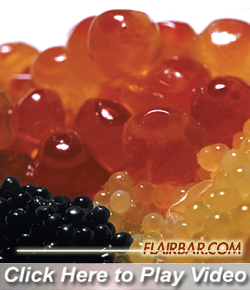 Cavier and Pearls are liquid spheres made one way with sodium alginate and calcium chloride. Sodium alginate a gelling agent that produces spherification in contact with calcium chloride. Calcium Chloride is a hydroscopic solution which will draw water away from a solution through a process of osmosis and will form a gel on the outside of the liquid. Using this combined method we are able to make little gelatin like balls of our choice that resemble traditional caviar without the fishy taste. Smaller spheres being caviars and larger spheres being pearls.
Cavier and Pearls are liquid spheres made one way with sodium alginate and calcium chloride. Sodium alginate a gelling agent that produces spherification in contact with calcium chloride. Calcium Chloride is a hydroscopic solution which will draw water away from a solution through a process of osmosis and will form a gel on the outside of the liquid. Using this combined method we are able to make little gelatin like balls of our choice that resemble traditional caviar without the fishy taste. Smaller spheres being caviars and larger spheres being pearls.
These have a great presentation in a container on the side or look great in a cocktail or applied as a garnish. A little more work both for the Mixologist and the lucky guests consuming the cocktail, but well worth the time and effort. To learn a little more on how to make caviars and pearls click on the picture to the left to watch Claire Smith demonstrating this from one of her seminars.
Next we have Deconstruction, which helps us experience a classic drink in a very different way. Deconstruction breaks down the elements and flavors of a cocktail into separate parts and presented in a different way to be enjoyed separate and simultaneously together. Lets use the example Claire Smith uses in her seminar… the Raspberry Mule. The traditional Mule consists of vodka, lime, Angostura bitters and ginger beer. So lets break them down and deliver them in their component parts. First she takes fresh raspberries and sugar in a glass shaker and flames them using a mister filled with Angostura bitters to atomised spray with fire and heat up and help release the natural flavors and aroma of the raspberries while caramelizing and breaking down the super fine sugar as well. Next she adds 2oz of Belvedere Vodka and ice. Shake and double strains into a martini glass. So far we have the vodka, raspberry and Angostura bitters needed for the recipe.
Then in a separate shot glass she has a very tart lime jelly which accounts for the lime needed for the recipe. Next to that she has some candied ginger topped with a fine powder consisting of bi carbonate soda and citric acid which accounts for the ginger beer needed for the recipe. So enjoying the cocktail you would drink the martini, eat the jelly and finish with the candied ginger. Then repeat. Yum! This cocktail was a definite delight and really started to get my imagination wondering on what other wonders I could come up with?
This was just a taste of the many aspects of Molecular Mixology and explained a little more in detail by the young and talented lady that helped open up my eyes to it… Miss Claire Smith. In Part 2 we will explore more as well as the application of this knowledge behind the bar. Until then enjoy the videos below.
|
“Flairbar.com’s Interview with Belvedere Brand Ambassador and Master Mixologist Claire Smith” Flairbar.com had a chance to sit down with Belvedere Brand Ambassador and Master Mixologist Claire Smith as she shares with us her insights into the wonderful world of Molecular Mixology. |
||
|
“The Mojito Of The Future” From Bacardi & Eben Freeman Through Bacardi a lot of research has gone into this new trend of couture cocktails and to celebrate 146 years of heritage, Bacardi worked with world renowned molecular mixologist Eben Freeman they have refined recipes and techniques to create the first Bacardi Mojito of the Future. |
||
|
“Bols Amsterdam presents an Introduction to Molecular Mixology” Bols explores Molecular Mixology with Herve This, celebrated chemist and pioneer of Molecular Gastronomy. You can also notice regular Flairbar.com contributer and Bols ambassador Philip Duff in the background. |
||
|
|
The New York Times Magazine: The Edible Martini Chef/mad scientist Dave Arnold of the French Culinary Institute has figured out how to vacuum infuse a martini inside a cucumber. |
|
|
“Alginate Spheres” Blueberry syrup, sodium alginate and calcium chloride is all you need to make these spheres that look a little like caviar. |
To Flair and Friends…
ROB HUSTED
Have you ever wanted more time and more help in your...
MANGO MAGIC: Marco Estrada, Brownsville, TX 1 ½ oz Aviation Gin ¾...
ALOE WOK: Olya Sabanina, Saint Petersburg, Russia 1 1/3 oz Aviation Gin...
About the author, Elton Marvin Jr. has worked in the food and...
From starting out picking up a Flairco bottle after watching the movie...
From starting out blowing fire behind a bar, performing magic, competing in...
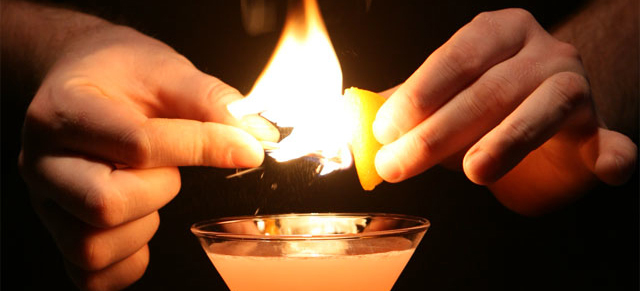
Your cart is empty.
Click “Play” on the video above.
Click “Play” on the video above.
Click “Play” on the video above.

